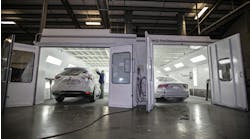For more than a year the aftermarket has attempted to gain a clear picture of AutoZone’s Pay-On-Scan (POS) initiative — specifically, which manufacturers are participating and how much money AutoZone is saving in inventory costs. We can expect answers to the financial impact when AutoZone reports its third quarter numbers.
Last month during a conference call related to AutoZone’s fiscal 2004 second quarter, executives told listeners that the Securities and Exchange Commission (SEC) has given AutoZone the green light on its Pay-On-Scan accounting. As a result, the gross amount of sales and the cost of goods sold will both be reported. And the inventory on accounts payable related to all POS inventory will be removed from AutoZone’s balance sheet going forward, according to AutoZone Sr. V.P. and CFO Michael Archbold.
“With the accounting treatment now SEC approved, we expect to report to you next quarter much less inventory on our balance sheet,” Archbold told analysts during the call.
You should recall that POS is an initiative the chain launched in January 2003 in an attempt to have suppliers own their inventories until the products are scanned at the checkout counter. The process was adopted from other industries, and it has drawn resistance from manufacturers who believe the related expense will be too burdensome for their businesses.
“This initiative encourages AutoZone and it’s vendors to focus on taking cost out of the entire supply chain and ultimately growing customer sales,” Archbold said during the conference call.
AutoZone has publicly stated that it expects to achieve 100 percent accounts payable to inventory. For the second quarter, that percentage was at 82 percent, up from 70 percent during the same period last year.
“We’ve achieved this level of accounts payable through working with our vendor community, extending programs like vendor factoring and Pay-On-Scan,” Archbold said. “The factoring program continues to be very popular for our vendor base. Seven percent of our vendors are currently on the program, and they represent approximately 23 percent of our accounts payable outstanding.”
Gross inventory per store declined to $443,000 versus last year’s $471,000; although, net inventory per store actually decreased in total by almost 40 percent in the second quarter versus the same time last year. Net inventory less accounts payable dropped from $140,000 per store to $81,000 per store.



